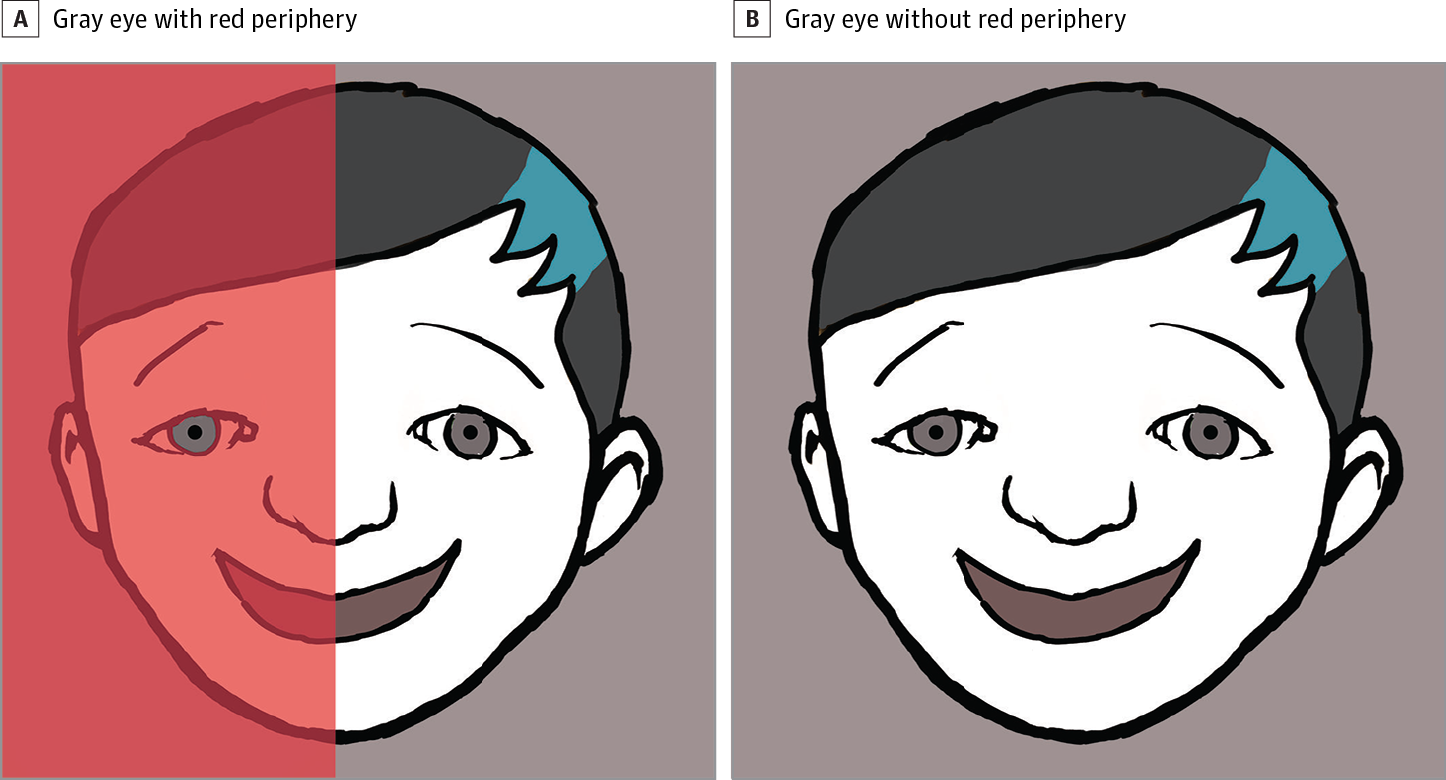
The Role of Subtractive Color Mixing in the Perception of Blue Nevi and Veins—Beyond
the Tyndall Effect
Melissa Shive, MD, MPH1; Derek Ho, BS2; Olivia Lai, BS3; Andrew Mamalis, MS4;
Kevin M. Miller, MD5; Jared Jagdeo, MD, MS2,4,6
JAMA Dermatol. 2016;152(10):1167-1169.

Image Depicting the Concept of Simultaneous Contrast
This image demonstrates the concept of simultaneous contrast. Both eyes in A and
B are exactly the same hue of gray (CMYK 55%, 53%, 48%, 16%). A, When 1 eye is
peripherally surrounded by red, that same gray hue appears dramatically blue. B,
This illusion is dispelled when the red is removed. Image adapted from Rootman
et al.(Rootman DB, Lin JL, Goldberg R. Does the Tyndall effect describe the blue
hue periodically observed in subdermal hyaluronic acid gel placement? Ophthal
Plast Reconstr Surg. 2014;30(6):524-527.)
It is traditionally explained that the Tyndall effect leads to a preferential scattering and subsequent reflectance of blue light back to the eye, which accounts for the color of blue nevi. Blue nevi and veins are perceived as blue because they have less red, leading to a shift in hue toward blue (subtractive color mixing), an effect enhanced by chromatic induction because of the decrease in red relative to the surrounding skin.